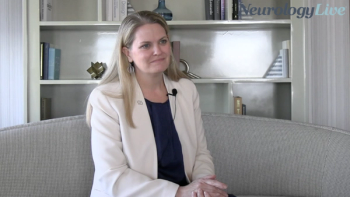
MRI Data Shows Relative Frequency of New Asymptomatic Lesions During NMOSD Attacks
The presence of new asymptomatic MRI lesions among patients with NMOSD during the relapse-free period and at relapses was not associated with a shorter time to developing subsequent relapses.
Recently published in the journal of Multiple Sclerosis, a retrospective study showed that new asymptomatic MRI lesions were relatively frequent among patients with neuromyelitis optica spectrum disorder (NMOSD) during the relapse period.1 The findings from this study, which was the first large cohort from a Latin America region, reflected real-world evidence of clinical practice and provide additional international data to compare with other regions in the world.
Among 135 patients with aquaporin-4 immunoglobulin-G (AQP4-IgG)-positive NMOSD (64.4%), 19.26% (n = 26) and 48.88% (n = 66) of patients experienced at least 1 new asymptomatic MRI lesion during both the relapse-free period and attacks, respectively. At the same times, the most frequent asymptomatic MRI lesions were optic nerves (relapse-free period: 38.46%; attacks: 25.75%) followed by short transverse myelitis (relapse-free period: 23.07%; attack period: 13.63%) with no differences observed between patients who were AQP4-IgG-positive and AQP4-IgG-negative.
Senior author Juan Ignacio Rojas, MD, specialist in the Multiple Sclerosis and Demyelinating Diseases Unit at CEMIC University Hospital in Buenos Aires, Argentina, and colleagues, assessed the frequency of new asymptomatic lesions on MRI and their association with subsequent relapses in patients with NMOSD from the RelevarEM registry (NCT03375177). Researchers retrospectively reviewed 675 MRI of patients with NMOSD who had at least 2 years of clinical and MRI follow-up since disease onset. For the MRI scans, 225 were performed during an attack and 450 were performed during the relapse-free period, all at least 3 months from the last attack. Kaplan-Meier curves were utilized in the analysis to depict the time from remission of the MRI to subsequent relapse.
READ MORE:
There was a total of 262 attacks over a median disease duration of 9 (±5.25) years. The Kaplan-Meier curves did not show any differences in the time taken to develop a new relapse (log-rank test: P = .30). Notably, there were no differences observed either when comparing the cumulative hazard risk of subsequent relapses (HR, 1.22, 95% CI = 0.67–2.34, P = 0.23) between NMOSD patients with and without asymptomatic MRI lesions.
All told, the study was limited by the possibility of bias given the relatively small sample of patients included in the different subgroups, reducing its statistical power. Another important limitation authors noted was the lack of standardized MRI assessment of MRI lesions during a regular time interval on the same scanner using variable magnetic field intensity. This action could potentially enhance the rate of detection for new asymptomatic MRI lesions not reported in conventional studies. In addition, authors noted that the role of immunosuppressant treatment was not included in the study, which could have influenced the results.
“Further prospective studies, employing regular intervals with MRI identical field intensity in patients receiving equal treatments, with a larger number of participants are needed to assess the generalizability of our conclusions, thus determining whether performing MRI outside of relapses at follow-up as a complementary subclinical activity control in NMOSD patients is relevant in clinical practice, especially in the current era of newly approved immunotherapies,” Rojas and colleagues noted.1
REFERENCES
1. Carnero Contentti E, Lopez PA, Tkachuk V, et al. Frequency of new asymptomatic MRI lesions during attacks and follow-up of patients with NMOSD in a real-world setting. Mult Scler. 2023;13524585231187120. doi:10.1177/13524585231187120
Newsletter
Keep your finger on the pulse of neurology—subscribe to NeurologyLive for expert interviews, new data, and breakthrough treatment updates.


































